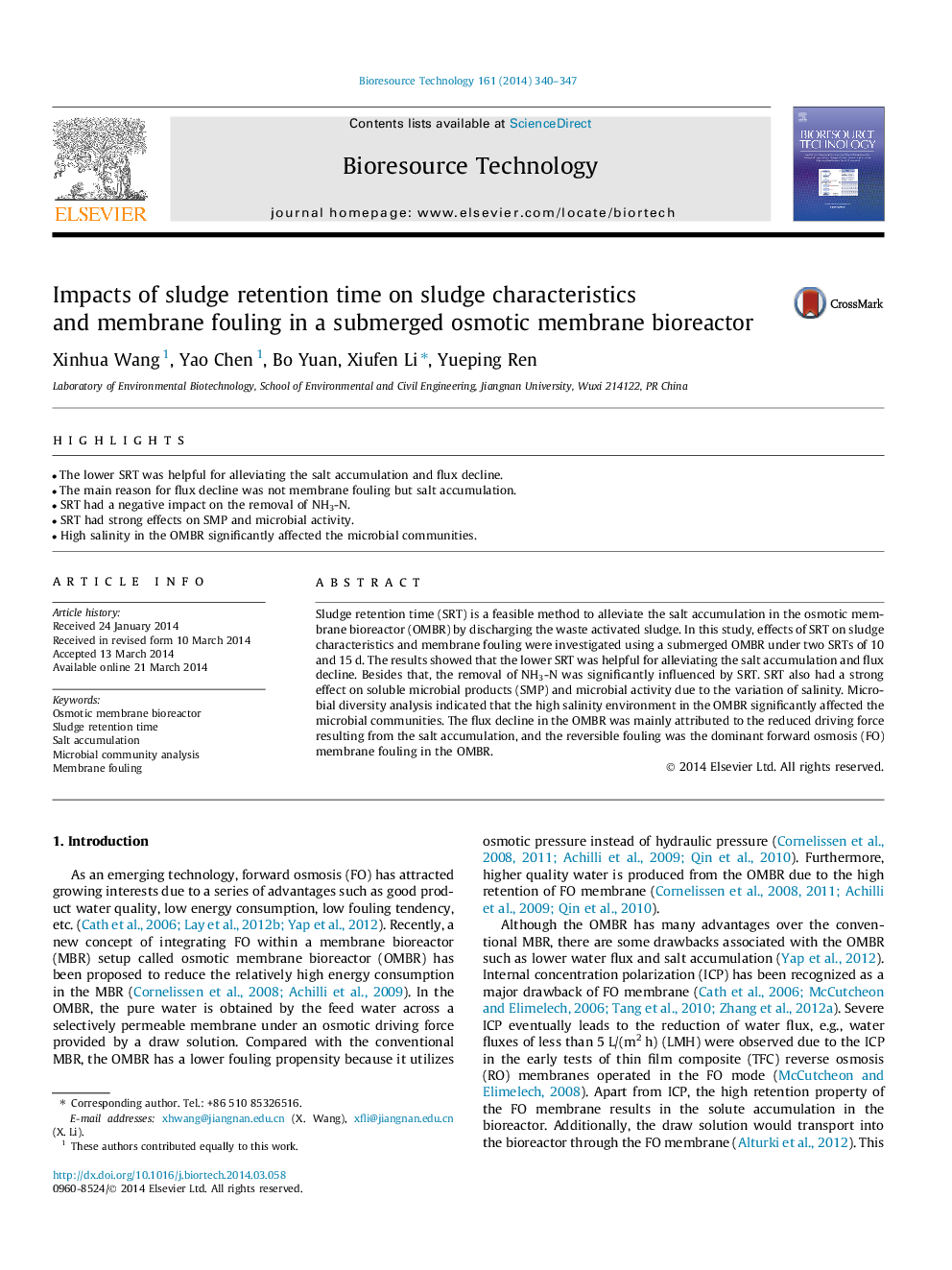| Article ID | Journal | Published Year | Pages | File Type |
|---|---|---|---|---|
| 7078417 | Bioresource Technology | 2014 | 8 Pages |
Abstract
Sludge retention time (SRT) is a feasible method to alleviate the salt accumulation in the osmotic membrane bioreactor (OMBR) by discharging the waste activated sludge. In this study, effects of SRT on sludge characteristics and membrane fouling were investigated using a submerged OMBR under two SRTs of 10 and 15Â d. The results showed that the lower SRT was helpful for alleviating the salt accumulation and flux decline. Besides that, the removal of NH3-N was significantly influenced by SRT. SRT also had a strong effect on soluble microbial products (SMP) and microbial activity due to the variation of salinity. Microbial diversity analysis indicated that the high salinity environment in the OMBR significantly affected the microbial communities. The flux decline in the OMBR was mainly attributed to the reduced driving force resulting from the salt accumulation, and the reversible fouling was the dominant forward osmosis (FO) membrane fouling in the OMBR.
Keywords
Related Topics
Physical Sciences and Engineering
Chemical Engineering
Process Chemistry and Technology
Authors
Xinhua Wang, Yao Chen, Bo Yuan, Xiufen Li, Yueping Ren,
